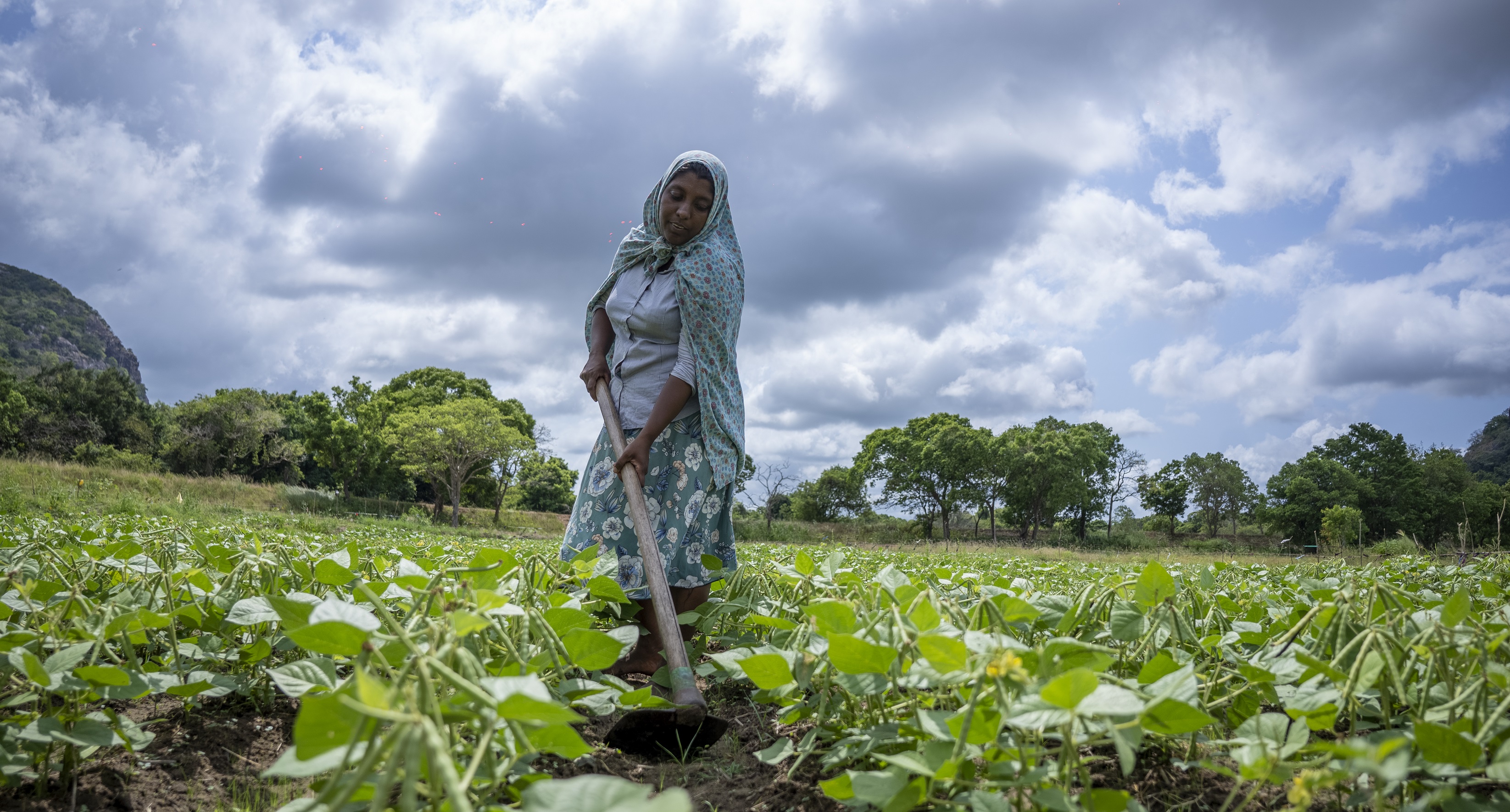An ancient water system in Sri Lanka offers a blueprint for climate resilience
October 9, 2024

Adopting an ecosystem-based approach, restoration of Sri Lanka's ancient hydraulics system simultaneously supports irrigation, provides drinking water and enhances agriculture.
Drive five hours north of the capital, Colombo, and the air hangs dry with a sun that seems to scorch just about anything it touches. The so-called Dry Zone is the agricultural heartland of Sri Lanka where life revolves around a single, most-precious resource: water.
For decades, farming communities here have looked to the skies waiting for the rains to break droughts, or lamenting lost harvests destroyed by floods. Now climate change is bringing cascading and devastating social impacts, entrenching generations of rural communities in cycles of poverty and debt. Speak to farmers in the area and the conversation will undoubtedly turn to water.
The recent Multidimensional Vulnerability Index report, co-published by UNDP and the Oxford Poverty and Human Development Initiative, reveals a stark reality: more than half the population (55.7 percent) in Sri Lanka – about 12.3 million people – experience multidimensional vulnerability. For more than a third of the country, lack of access to water means a daily struggle. Its impact is most acute in the Dry Zone, with communities struggling to meet their daily needs, support livelihoods and protect nature as a resource.
It wasn’t always this way. Sri Lanka’s Dry Zone was once home to a sophisticated civilization that thrived on a hydraulic-based system, an ancient irrigation network designed to manage alternating wet and dry seasons. The intricate “cascade system” a framework of interconnected reservoirs, ensured a delicate balance between communities and their environment, making the region a thriving agricultural hub.

Restoration of ancient irrigation systems is a nature-based, home-grown approach to addressing climate risks in vulnerable communities in Sri Lanka's Dry Zone.
Over the past two centuries, however, neglect and degradation of the system upended this delicate balance, disrupting the flow of water and leaving communities exposed to the worsening impacts of climate change. Unsustainable agricultural practices, such as over-cultivation, improper land use, and the clearing of forests, have severely degraded the environment in the Dry Zone. These practices have disrupted natural water cycles, reduced soil fertility, and eroded the once-vibrant landscape, making it even more vulnerable to the worsening impacts of climate change. Today, they face a myriad of challenges to their livelihoods, health, and food security, making resilience to climate change more critical than ever.
So, what is the solution?
The Climate Resilient Integrated Water Management Project (CRIWMP) financed by the Green Climate Fund is a nature-based, home-grown approach to addressing climate risks in vulnerable communities like the Dry Zone. Implemented by the Government of Sri Lanka, with support from UNDP, it is reviving the old irrigation systems in three river basins of Mee Oya, Yan Oya and the Malwathu Oya.
Now in its seventh year, the impacts are tangible. The project has adopted a community-based approach, engaging men, women, and youth, in its implementation, turning communities into active partners in decision-making and empowering them to take charge of their own development.
By adopting an ecosystem-based approach, the Project is restoring the cascade system to simultaneously support irrigation, provide drinking water, enhance agriculture, and nurture surrounding biodiversity. This approach brings the delicate balance of nature and livelihoods back into harmony, creating a resilient, self-sustaining model that empowers communities to withstand changing climate.
By restoring water channels with sustainable features like reforesting watersheds to trap contaminants, restoring the reservoir bund, spillways, sluices, and canals, and desilting the reservoir to increase water storage, the project has improved water management, enhanced groundwater recharge, and reduced ecosystem degradation. A combination of climate-resilient infrastructure, climate-smart agriculture, and climate information services ensure that water is available around the year, ensuring that communities are better equipped to face current and future challenges.
The project’s impacts have spread well beyond its focus on providing water. It has helped improve health outcomes and boosted agricultural productivity, with farmers' incomes in 2023 rising by 75 percent compared to the previous year. The benefits ripple even further, advancing economic opportunities, empowering women, fostering value chain development, and attracting private sector engagement.

UNDP Resident Representative Azusa Kubota speaks with residents in the Dry Zone of Sri Lanka.
The strength of the project lies in its adaptability and community-driven approach, making it scalable and effective across diverse contexts, and a blueprint for broader climate resilience and development initiatives. Locally known as the ‘wew gam pubuduwa’ -- which directly translates to a revival of reservoirs and villages – the initiative has lived up to its name, by bringing transformative change to lives of children, youth, women and people with disabilities, across the region.
This integrated water management model offers more than just a plan for water and food security, it lays the foundation for reviving a stagnant rural economy and harmonizing the sustenance of rural livelihoods and ecosystems.
Now, more than ever, it's crucial that development assistance continues to empower home-grown, community-led, nature-based solutions. Such initiatives represent a transformation that brings hope for generations to come.

 Locations
Locations









